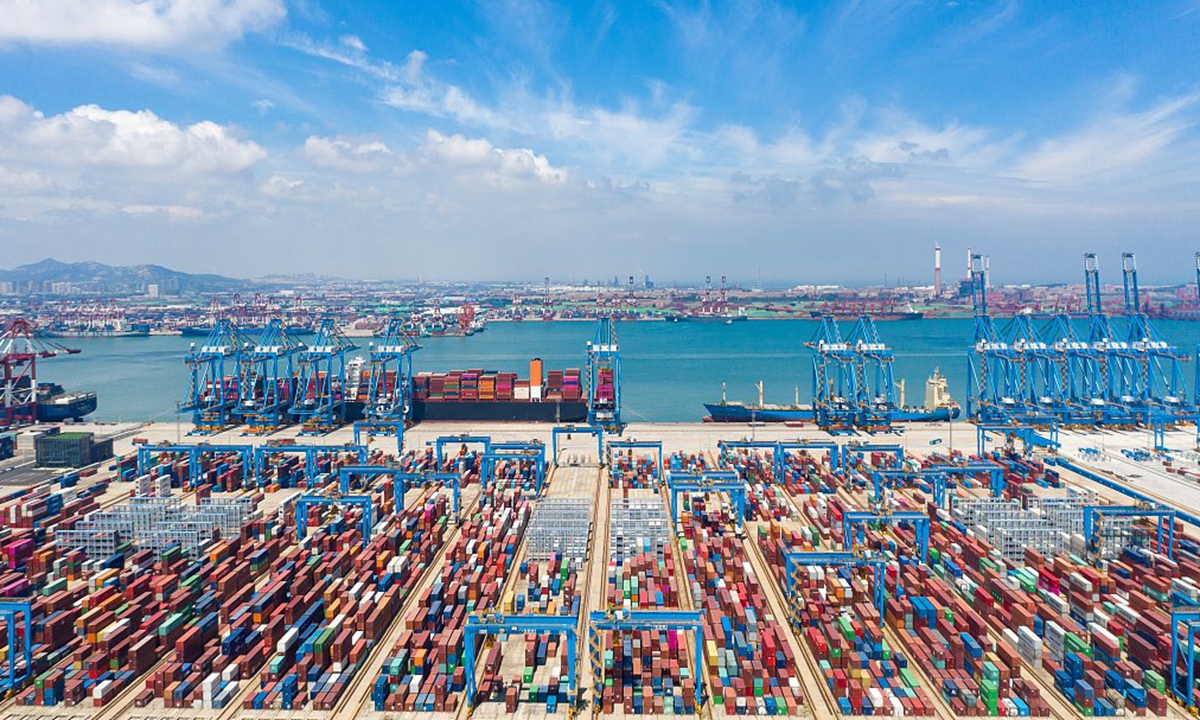China's foreign trade grew 10.4% in first seven months, underscoring economic resilience amid external pressure

China's foreign trade volume reaches 23.6 trillion yuan ($3.49 trillion) in the first 7 months of 2022, maintaining double-digit growth.
Supported by the effective control of a COVID-19 flare-up and Beijing's stimulus policies, China's foreign trade grew 10.4 percent year-on-year in the first seven months of the year, 1 percentage point faster than the first half of the year, underscoring the resilience and China's giant export machine.
The trade data showed that China's foreign trade has overcome the impact of the COVID-19 in the first half of the year, and the pent-up growth momentum will be gradually released throughout the year, Bai Ming, deputy director of the International Market Research Institute at the Chinese Academy of International Trade and Economic Cooperation, told the Global Times on Sunday.
In January and July, the country's foreign trade volume reached 23.6 trillion yuan ($3.49 trillion), an increase of 10.4 percent year-on-year, data from the General Administration of Customs (GAC) showed on Sunday, above the growth rate of 9.4 percent seen in the first half of the year.
During the first seven months, the country's exports grew 14.7 percent year-on-year to reach 13.37 trillion yuan, whereas imports were up 5.3 percent to hit 10.23 trillion yuan, the customs data showed.
The one percent growth from the first six months of the year comes as China's special relief measures for small and medium-sized enterprises, including tax reductions have achieved expected effects, Bai said, adding that the devaluation of the yuan from the first half of the year and a significant drop in logistics costs also offered favorable conditions for export growth.
ASEAN remained China's largest trading partner during the first seven months, accounting for 15 percent of the country's total foreign trade, according to the GAC.
China's trade with its top three trading partners - the ASEAN, the EU, and the US - grew 13.2 percent, 8.9 percent, and 11.8 percent from a year ago, respectively. China's trade with Belt and Road economies jumped 19.8 percent year-on-year, while that with the 14 Regional Comprehensive Economic Partnership (RCEP) economies was up 7.5 percent from January to July.
Bai said that the possibility that the US may remove some tariffs on Chinese exports and the dividends brought by from the RCEP trade deal will continue to add momentum to China's foreign trade through the year, Bai said.
However, challenges such as economic contraction in European and the US as well as rising competition from Southeast Asian countries like Vietnam could add some pressure on China's foreign trade in the second half of the year, Bai said.
A meeting of the Political Bureau of the Communist Party of China's Central Committee held on July 28 urged for efforts to actively promote imports and exports, while also placing emphasis on introducing foreign capital and technology.
Amid the ongoing uncertainty, the country will implement a series of measures to stabilize and improve the quality of foreign trade in the second half of the year to consolidate its resilience, Shu Jueting, a spokesperson for the Ministry of Commerce, said recently at a regular press briefing.
Officials will work to guide foreign trade firms to explore and expand the international market. China will continue to organize international exhibitions, such as the China International Import Expo and the China Import and Export Fair, and encourage localities and industrial associations to hold online exhibits, she said.
